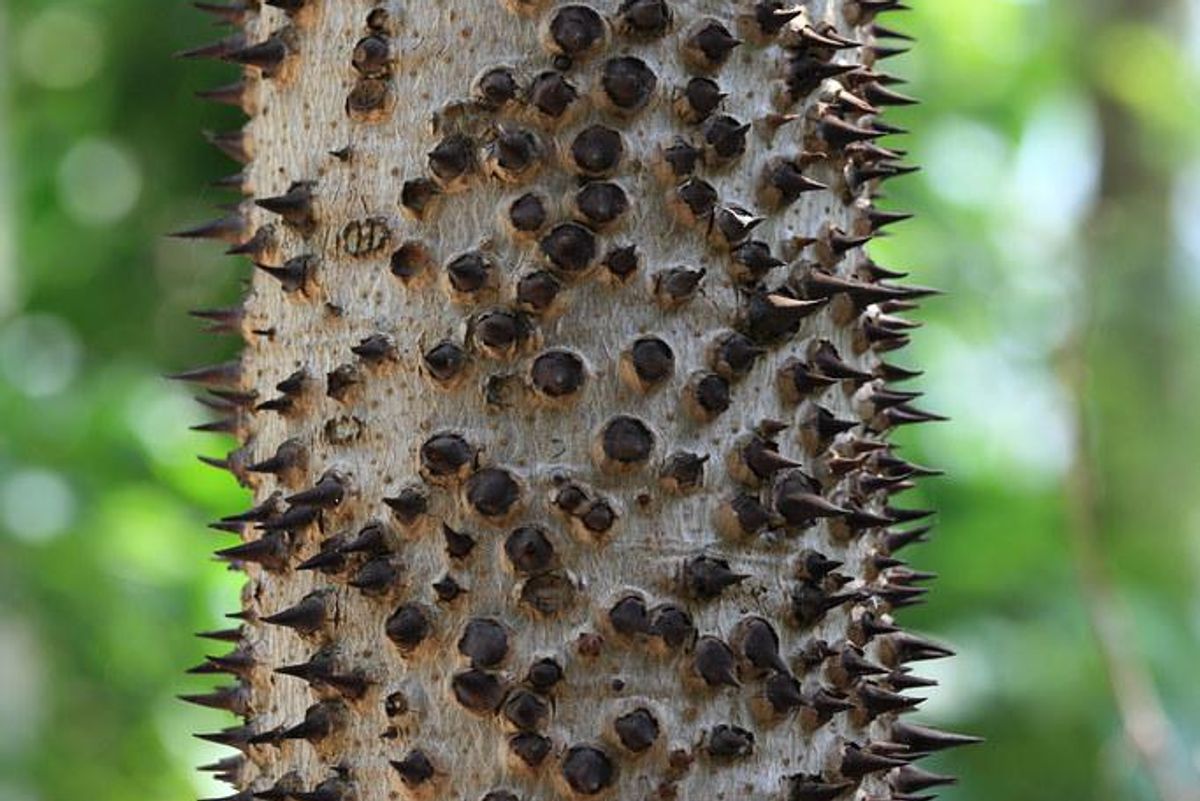Ever heard of a dynamite tree? It's a tree built to kill.
The planet never ceases to provide things that leave us in awe.

Who's stringing lights on this guy for the holidays?
Ah, trees. One of Mother Nature’s most majestic creations. Always glorious sights to behold, with their bountiful blooms, luscious leaves and poisonous fruit bombs…
Wait, what?
You read that correctly. The sandbox tree, also known as the monkey no-climb or dynamite tree, lives up to all of its nicknames. It might not hold the official record for being the “most deadly tree in the world,” but it certainly comes close.
A video posted to YouTube by Animalogic gives a fun deep dive on the sandbox tree and all the ways in which it “chooses violence.” Reader beware: This might cause trust issues with other trees. Suddenly you might find yourself wondering what that birch in your front yard’s real intentions are.
First off, let’s talk about those fruit bombs.
The sandbox tree’s official name references the small pumpkin-like fruit it bears. Up until the mid-1800s, when sand was the primary tool for blotting ink, these small gourds made a perfect container for sand and therefore were a standard desk item until they were replaced with blotting paper, Animalogic explained.
But when not being harvested as desk ornaments, these fruits can act as seed explosives. Though this is more of a reproductive strategy than a defensive attack (aiming to get the seeds as far away from the parent plant as possible), humans and animals caught in the crossfire can still be badly hurt by a relentless seed onslaught.
Luckily these seed grenades are fairly predictable and therefore avoidable. They don’t explode at night or when the air is damp, as they need heat and dryness to be ignited. When temperatures are high, however, the fruit will lose more than half of its moisture—becoming so dry each of the 15 sections will violently split away from each other … sort of like distant cousins at an outdoor family reunion. If that happens, look out!
Next, we have stabbing bark.
Yep, from top to bottom, the sandbox tree is densely covered in needle sharp, knife-like points. Hence, monkey no-climb (and hopefully nothing else tries to climb it either). No wonder Animalogic likened it to a “medieval torture device.”
When all else fails, the sandbox tree relies on a weapon that’s withstood the test of time—poison.
Remember those fruit bombs? Well, even if they don’t explode and kill you, just one bite could result in violent cramps, vomiting and diarrhea. OK, so maybe it’s not death … but it ain’t great.
The sandbox tree’s thick, red sap it secretes is also toxic, creating a skin rash on contact, not to mention temporary blindness if it gets into your eye. Indigenous peoples would dip their darts into this sap for hunting and warfare. On the plus side, certain parts of the plant can allegedly be used to treat stomach issues, eczema, rheumatoid arthritis and intestinal worms. Please, please don’t try this at home.
Much like Audrey II in “Little Shop of Horrors,” this tree seems hellbent on world domination. Because of its explosive and efficient seed dispersing system, the species is now considered invasive in East Africa. Ironically, the trees were consciously planted there for shade.
 Giphy
GiphyOne person joked in the video’s comments, “okay, who thought the poisonous, explosive, thorn-covered tree would be the best option to import for shade?” A fair question!
The sandbox tree might be a tad toxic, deadly, intrusive and insidious, but it’s still pretty cool to learn about. The planet never ceases to provide things that leave us in awe … and in this case, terrified.
And special kudos to Animalogic for providing entertaining and educational videos. You might have given us some nightmare fuel, but we love it.
- FDR planted trees during the last climate crisis - Upworthy ›
- Why you can't grow a Hass avocado from a Hass avocado seed ... ›
- Moringa is known as 'The Miracle Tree,' and its powers are ... ›
- Guy uses wood from states' official trees to make US map - Upworthy ›
- 'Tree Mountain' is a man-made forest designed by Agnes Denes - Upworthy ›

